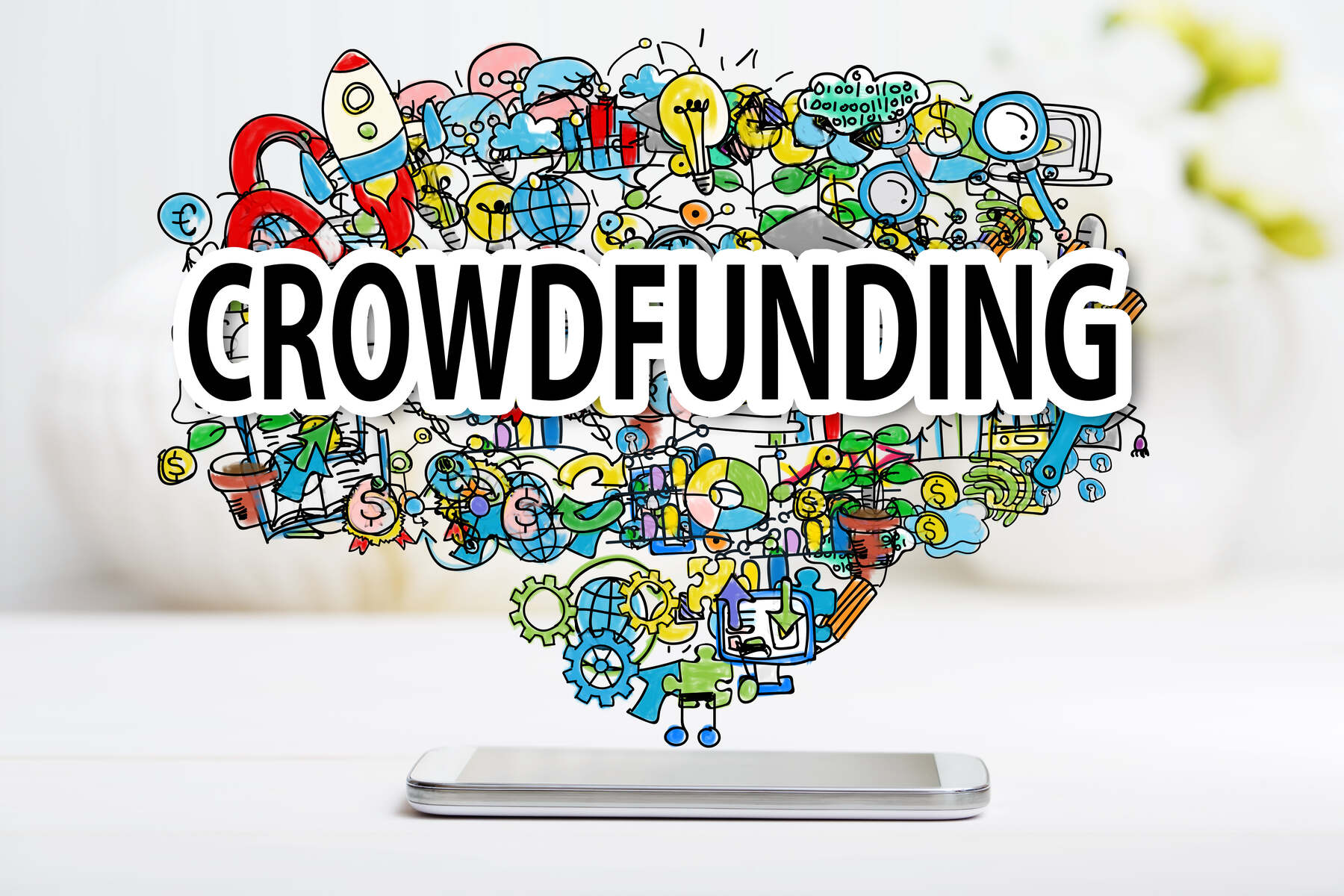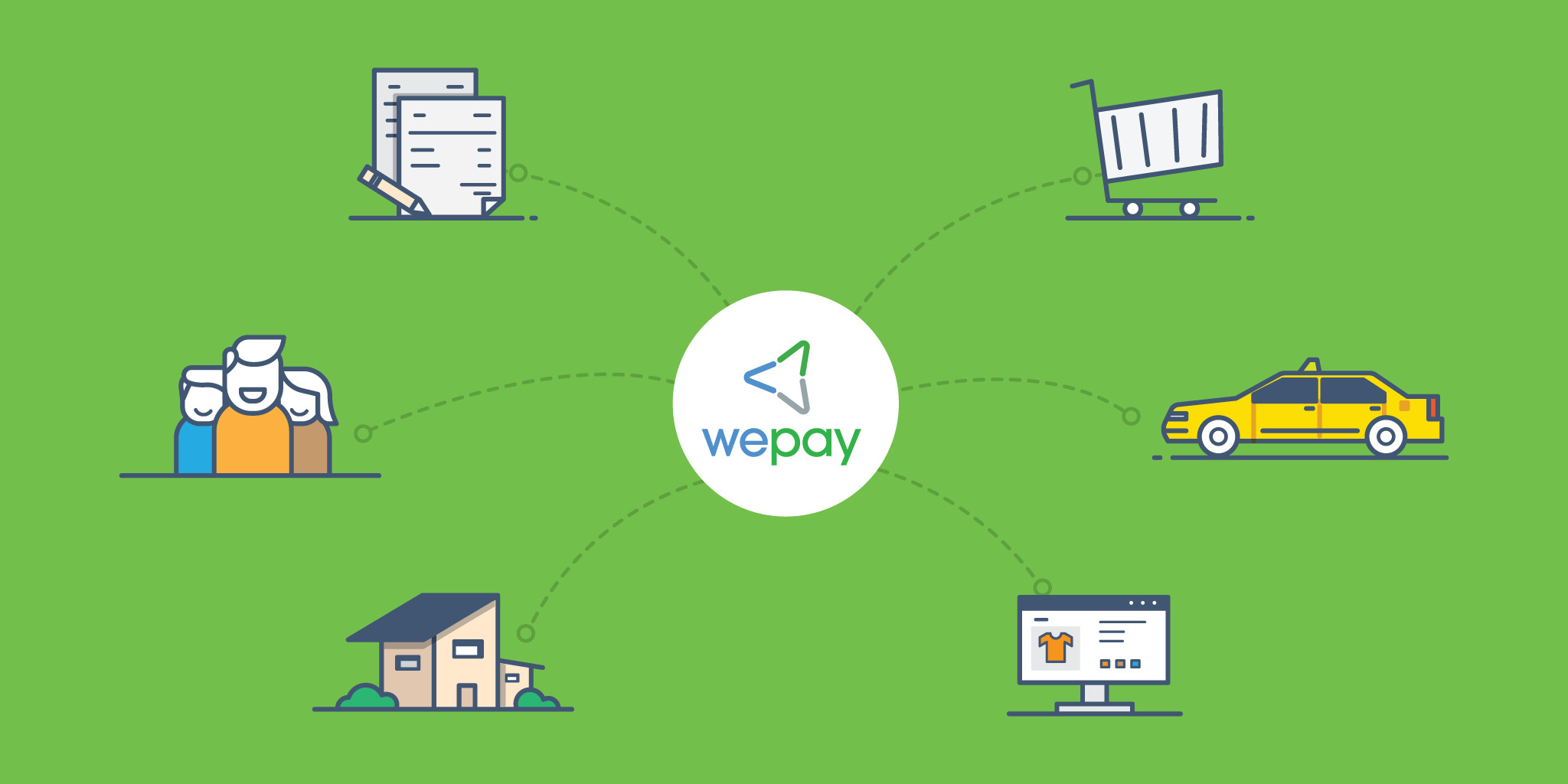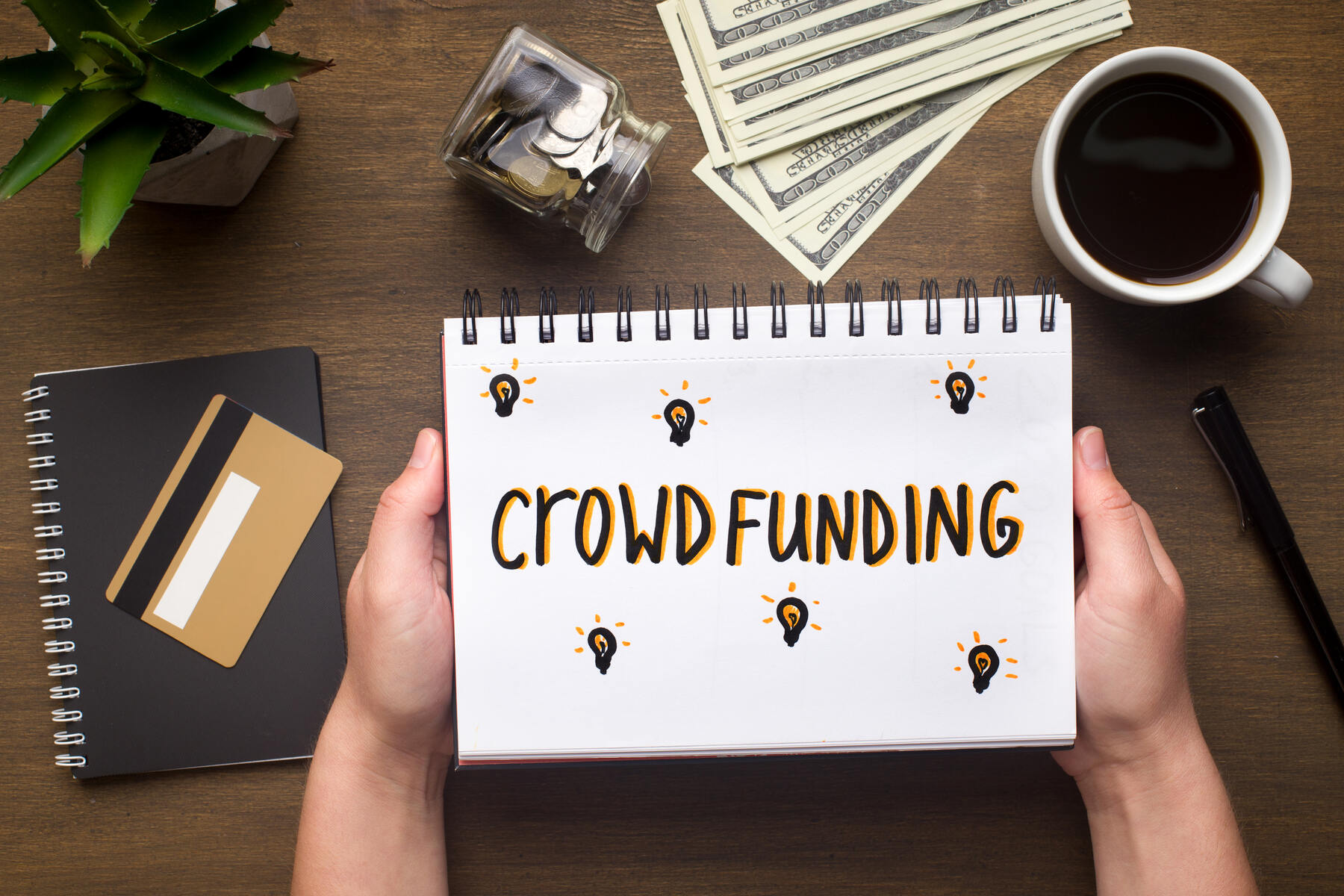Introduction
Welcome to the world of crowdfunding for nonprofits, where the power of the crowd can help turn your organization’s dreams into reality. In today’s digital age, crowdfunding has become a popular and effective method for nonprofits to raise funds, engage supporters, and create positive social change.
Crowdfunding is the practice of raising small amounts of money from a large number of people, typically through online platforms. It provides a way for nonprofits to connect with a wide audience of potential donors who are passionate about their cause. Whether you’re a small charity, a grassroots organization, or an established nonprofit, crowdfunding can offer a range of benefits and opportunities.
Nonprofits are increasingly turning to crowdfunding as a way to supplement traditional fundraising methods. The power of crowdfunding lies in its ability to create a sense of community and leverage the collective support of individuals who may not otherwise have known about or been able to contribute to a particular cause. By harnessing the power of social networks and online platforms, nonprofits can amplify their reach and engagement, mobilizing their supporters in a way that was not possible before.
In this guide, we will explore the world of crowdfunding for nonprofits, exploring its benefits, how it works, and providing tips and best practices for a successful campaign. We will also delve into real-life case studies of successful nonprofit crowdfunding campaigns, giving you inspiration and insights into what works.
So whether you’re new to crowdfunding or looking to enhance your existing efforts, this guide will equip you with the knowledge and tools to make the most out of this innovative fundraising strategy. Let’s dive in and discover how crowdfunding can help your nonprofit take its impact to new heights!
What is Crowdfunding?
Crowdfunding is a fundraising approach that allows individuals, organizations, or businesses to raise money for a specific project or cause through small contributions from a large number of people, typically using an online platform. It taps into the power of the crowd, enabling individuals to collectively support initiatives and bring ideas to life.
Unlike traditional fundraising methods, such as grant applications or individual donations, crowdfunding provides a more democratic and accessible way to raise funds. It breaks down barriers, allowing anyone with an internet connection to contribute to a cause they believe in, regardless of their financial status or geographic location.
There are several types of crowdfunding models, each with its own unique features:
- Reward-based crowdfunding: In this model, supporters receive a non-financial reward in exchange for their contribution. This could be a token of appreciation, a product or service related to the project, or an experience tied to the cause. For example, a nonprofit may offer branded merchandise or exclusive experiences to individuals who contribute to their crowdfunding campaign.
- Donation-based crowdfunding: In donation-based crowdfunding, contributors give money to support a cause they care about without expecting anything in return. This model is commonly used by nonprofits and charitable organizations to raise funds for programs, initiatives, or emergency relief efforts.
- Equity-based crowdfunding: Equity-based crowdfunding allows individuals to invest in a project or business in exchange for equity or ownership in that venture. This type of crowdfunding is often used by startups or small businesses seeking capital to grow their operations.
- Debt-based crowdfunding: Also known as peer-to-peer lending, debt-based crowdfunding involves individuals lending money to others or businesses with the expectation of being repaid with interest. This model is commonly used for personal loans or small business financing.
Regardless of the specific crowdfunding model, the underlying principle remains the same: bring people together to support a cause or project financially. By leveraging the power of social networks, crowdfunding has revolutionized the fundraising landscape, making it easier and more efficient for nonprofits to engage with potential donors and achieve their goals.
Why use Crowdfunding for Nonprofits?
Crowdfunding has become an increasingly popular fundraising tool for nonprofits, and for good reason. Here are several key reasons why nonprofits should consider incorporating crowdfunding into their fundraising strategies:
1. Increased Reach and Visibility
Crowdfunding provides an opportunity to reach a large and diverse audience of potential donors, far beyond the organization’s traditional network. By utilizing online platforms and social media, nonprofits can tap into the power of the internet to raise awareness about their cause and engage supporters worldwide. This increased visibility can attract new supporters, expand the organization’s reach, and help create a broader community of advocates for the cause.
2. Engaging the Crowd
Crowdfunding is a highly interactive and engaging form of fundraising. It allows nonprofits to tell their story, communicate their mission, and showcase the impact of their work in a compelling way. By involving the crowd in the fundraising process, nonprofits can create a sense of ownership and involvement among their supporters, fostering a deeper connection and commitment to the cause.
3. Cost-Effective Fundraising
Crowdfunding can be a cost-effective fundraising method compared to traditional approaches. It eliminates the need for extensive overhead costs associated with organizing events or direct mail campaigns. With crowdfunding, nonprofits can leverage online platforms that handle the technical aspects of the fundraising process, allowing them to focus on creating compelling campaigns and engaging with donors.
4. Flexibility and Control
One of the advantages of crowdfunding is the flexibility it offers. Nonprofits have the freedom to choose the specific projects or initiatives they wish to crowdfund, tailoring their campaigns to align with their fundraising goals and organizational needs. This level of control enables nonprofits to be strategic in their fundraising efforts and allows them to experiment with different campaigns and approaches.
5. Data and Insights
Through crowdfunding platforms, nonprofits can gain valuable data and insights about their donors. This information can help nonprofits understand their audience better, identify trends, and make data-driven decisions to optimize future fundraising efforts. By analyzing donor behavior, nonprofits can refine their strategies, personalize communication, and build stronger relationships with their supporters.
These are just a few of the many reasons why nonprofits should consider incorporating crowdfunding into their fundraising strategies. With its wide reach, engaging nature, cost-effectiveness, and data-driven insights, crowdfunding provides nonprofits with a powerful tool to achieve their fundraising goals and make a positive impact on their communities.
Benefits of Crowdfunding for Nonprofits
Crowdfunding offers a range of benefits for nonprofits looking to raise funds and engage their supporters. Here are some key advantages of using crowdfunding as a fundraising strategy:
1. Diversified Funding Sources
By tapping into the power of the crowd, nonprofits can diversify their funding sources. Instead of relying solely on grants, individual donations, or corporate sponsorships, crowdfunding allows nonprofits to access a wide network of potential supporters who are passionate about their cause. This reduces the reliance on a few large donors and spreads the financial support across a larger number of contributors.
2. Increased Donor Engagement
Crowdfunding provides a platform for nonprofits to engage their supporters on a deeper level. Through compelling storytelling, updates, and interactive elements, nonprofits can build a sense of community around their campaign and keep donors engaged throughout the fundraising process. This level of engagement can foster long-term relationships with donors and turn them into active advocates for the cause.
3. Amplified Reach and Visibility
One of the key advantages of crowdfunding is its ability to amplify the reach and visibility of a nonprofit’s campaign. Through social media sharing and the viral nature of online platforms, crowdfunding campaigns can quickly spread to a wider audience. This increased visibility can attract new supporters and create awareness about the nonprofit’s mission and impact. It also provides an opportunity for nonprofits to showcase their work and build trust with potential donors.
4. Validation and Proof of Concept
Crowdfunding can serve as a validation of a nonprofit’s mission and proof of concept for their projects or initiatives. When a crowdfunding campaign successfully reaches its fundraising goal, it demonstrates that there is a market and demand for the nonprofit’s work. This can be valuable when seeking additional funding from other sources, as it provides evidence of the organization’s effectiveness and impact.
5. Flexibility and Creativity
Crowdfunding allows nonprofits to be creative and flexible in their fundraising efforts. Nonprofits can tailor their campaigns to appeal to specific audiences or highlight different aspects of their work. They can also experiment with different fundraising strategies, such as offering unique rewards or setting fundraising milestones. This flexibility allows nonprofits to adapt their approach based on donor feedback and optimize their campaigns for success.
6. Data and Insights
Crowdfunding platforms provide valuable data and insights that can help nonprofits understand their donors better. Through analytics and reporting features, nonprofits can gain insights into donor demographics, preferences, and engagement levels. This data can inform future fundraising strategies, personalized donor communications, and help nonprofits build stronger relationships with their supporters.
These are just a few of the many benefits that crowdfunding can offer to nonprofits. From diversified funding sources to increased donor engagement and amplified visibility, crowdfunding has the potential to transform the way nonprofits raise funds and create positive social change.
How does Crowdfunding work?
Crowdfunding operates on the principle of collective contributions, where individuals come together to support a common cause or project financially. Here’s a breakdown of how crowdfunding works:
1. Choosing a Crowdfunding Platform
The first step in crowdfunding is selecting a suitable platform to host your campaign. There are numerous crowdfunding platforms available, each with its own features and focus. It’s important to choose a platform that aligns with your nonprofit’s goals, target audience, and fundraising needs.
2. Setting a Fundraising Goal
Once you’ve chosen a platform, you’ll need to define your fundraising goal. This is the amount of money you aim to raise during the campaign. Setting a realistic and achievable goal is crucial to motivate and engage potential supporters. It’s also important to consider any fees or expenses associated with the crowdfunding platform when determining your fundraising goal.
3. Crafting a Compelling Campaign
A successful crowdfunding campaign begins with a compelling story that connects with potential donors on an emotional level. Your campaign should clearly communicate your nonprofit’s mission, why the cause is important, and how the funds will be utilized. Utilize visuals, videos, testimonials, and personal anecdotes to create a compelling narrative that resonates with your target audience.
4. Promoting Your Campaign
Once your campaign is live, it’s crucial to actively promote it to maximize visibility and engagement. Leverage your nonprofit’s existing network of supporters, engage with your community on social media, and reach out to local media outlets for additional exposure. A comprehensive marketing strategy, including regular updates, social media posts, and personalized outreach, is vital to gaining traction and inspiring people to contribute.
5. Engaging with Donors
As donations come in, it’s essential to engage with your donors and show gratitude for their support. Respond to their comments and messages, provide regular campaign updates on the platform and through other communication channels, and acknowledge their contributions publicly. Building a strong relationship with donors can lead to higher levels of engagement and increased support in the long run.
6. Managing Funds and Fulfilling Promises
Once your crowdfunding campaign has reached its goal or the specified time frame has ended, it’s time to manage the funds and fulfill any promises made to your donors. Be transparent about how the funds will be utilized and provide regular updates on the impact of their contributions. If you offered rewards or perks, ensure timely delivery and fulfill all the promises made during the campaign.
Crowdfunding is an iterative process that requires constant monitoring, engagement, and adaptability. Analyze the campaign’s performance, identify areas for improvement, and learn from the experience to enhance future crowdfunding efforts.
By understanding the ins and outs of crowdfunding, your nonprofit can harness the power of the crowd to mobilize support, raise funds, and create meaningful change.
Popular Crowdfunding Platforms for Nonprofits
When it comes to crowdfunding for nonprofits, there are several popular platforms to choose from. Each platform has its own unique features and benefits. Here are some of the most widely used crowdfunding platforms for nonprofits:
1. Kickstarter
With a focus on creative projects, Kickstarter has gained popularity as a crowdfunding platform for nonprofits. It allows nonprofits to raise funds for a variety of initiatives, such as art projects, community initiatives, and social causes. Kickstarter operates on a reward-based model, where supporters receive rewards or perks in exchange for their contribution.
2. Indiegogo
Indiegogo is a versatile crowdfunding platform that offers options for both nonprofit and for-profit projects. It provides different funding models, including donation-based and reward-based crowdfunding. Indiegogo also offers flexible funding options, where nonprofits can keep the funds raised even if they don’t reach their initial fundraising goal, unlike the all-or-nothing model of some other platforms.
3. GoFundMe
GoFundMe is widely known for personal fundraising, but it’s also an excellent platform for nonprofits. GoFundMe allows nonprofits to create campaigns for a range of causes and initiatives, including emergency relief efforts, medical expenses, and community projects. It offers a user-friendly interface and provides various sharing and social media tools to help nonprofits spread the word about their campaign.
4. Crowdrise
Crowdrise is a crowdfunding platform specifically designed for nonprofits and charitable organizations. It provides a platform for nonprofits to fundraise for a wide range of projects, including events, campaigns, and specific initiatives. Crowdrise offers a variety of tools to engage supporters, such as team fundraising, leaderboard challenges, and integration with popular fitness tracking apps.
5. Mightycause
Formerly known as Razoo, Mightycause is a popular crowdfunding platform for nonprofits and social impact projects. It offers both individuals and nonprofits the ability to create fundraising campaigns and receive donations. Mightycause provides a comprehensive suite of features, including customizable donation forms, team fundraising, recurring donations, and peer-to-peer fundraising tools.
6. DonorsChoose
DonorsChoose is a crowdfunding platform specifically designed for educational projects in K-12 schools. Nonprofits focused on education or schools can create campaigns to fund classroom projects, school supplies, field trips, and more. DonorsChoose provides a platform to connect teachers and students with potential donors who want to support educational initiatives.
These are just a few examples of popular crowdfunding platforms for nonprofits. It’s important to research and choose a platform that aligns with your nonprofit’s goals, target audience, and fundraising needs. Each platform has its own fee structure, features, and community, so consider the specific requirements and preferences of your organization when selecting a crowdfunding platform.
Remember, the success of your crowdfunding campaign ultimately depends on the effort you put into crafting a compelling story, engaging with your donors, and effectively promoting your campaign through various channels.
Tips for a Successful Crowdfunding Campaign
Launching a successful crowdfunding campaign requires careful planning, effective communication, and active engagement. Here are some tips to help your nonprofit create a compelling and impactful crowdfunding campaign:
1. Set Clear and Realistic Goals
Before launching your campaign, define clear and achievable goals. Determine the specific amount of funds you need to raise, the timeline for the campaign, and how the funds will be utilized. Having a well-defined goal will help attract donors who understand the purpose and impact of their contribution.
2. Craft a Compelling Story
Your campaign needs to tell a compelling and emotionally resonant story. Clearly communicate your nonprofit’s mission, the problem you’re addressing, and how the funds will make a difference. Use storytelling techniques, visuals, and testimonials to create a powerful narrative that connects with potential donors.
3. Offer Engaging Rewards
If you’re using a reward-based crowdfunding platform, create enticing rewards that compel people to contribute. Ensure that the rewards align with your cause and provide value to your supporters. Consider offering unique experiences, exclusive merchandise, or personalized acknowledgments to make the reward feel special.
4. Create a Strong Online Presence
Prioritize building a strong online presence before and during your campaign. Ensure your nonprofit’s website is up-to-date, user-friendly, and easily accessible. Use social media platforms to share updates, engage with your audience, and promote your campaign. Leverage email marketing to reach out to existing supporters and encourage them to participate.
5. Engage with Supporters
Engaging with your supporters is crucial to the success of your campaign. Respond promptly to comments and messages, and express gratitude for every donation. Regularly provide campaign updates through videos, blog posts, or social media to keep your supporters engaged and informed about the progress of the campaign.
6. Leverage Your Networks
Tap into your existing networks to promote your campaign. Reach out to friends, family, colleagues, board members, and volunteers, and ask them to share the campaign with their networks. Encourage them to be advocates for your cause and actively participate in spreading the word about your campaign.
7. Seek Media Coverage
Utilize media outlets to generate additional exposure for your campaign. Draft press releases, reach out to local newspapers, radio stations, and online publications that cover topics related to your cause. Highlight the unique aspects of your campaign and the impact it will have to pique their interest.
8. Show Transparency
Transparency is crucial when running a crowdfunding campaign. Clearly communicate how the funds will be used and provide regular updates to your supporters. Accountability builds trust and encourages continued support from donors.
By implementing these tips, your nonprofit can increase the chances of running a successful crowdfunding campaign. Remember to continuously analyze your campaign’s performance, adapt your strategy if necessary, and express gratitude to your supporters for their contributions.
Best Practices for Nonprofit Crowdfunding
Nonprofit crowdfunding can be a powerful tool to raise funds, engage supporters, and amplify your organization’s impact. Here are some best practices to help you maximize the success of your crowdfunding campaign:
1. Plan Ahead
Start planning your crowdfunding campaign well in advance. Set clear goals, create a detailed timeline, and identify the resources and team members needed to execute the campaign effectively. A solid plan will ensure that you’re ready to launch a well-prepared and coordinated campaign when the time comes.
2. Build a Strong Network
Prioritize building a strong network of supporters before launching your crowdfunding campaign. Cultivate relationships with individuals, businesses, influencers, and community partners who share your nonprofit’s mission. Engage with them regularly, provide value, and make them feel invested in your cause. When you launch your crowdfunding campaign, your existing network can provide a strong foundation of support.
3. Utilize Compelling Visuals
The power of visuals cannot be overstated. Use high-quality photos and videos to convey your nonprofit’s impact, tell stories, and create emotional connections with your audience. Visuals can captivate and inspire potential donors, making them more likely to contribute to your crowdfunding campaign.
4. Craft a Strong Call to Action
Your call to action (CTA) should be clear, concise, and compelling. Clearly communicate what you want your supporters to do and why their contribution matters. Use persuasive language and create a sense of urgency to encourage immediate action. Make it easy for donors to contribute by providing clear instructions and a user-friendly donation process.
5. Offer Regular Updates
Provide regular updates to your supporters during your crowdfunding campaign. Keep them informed about the progress, milestones, and impact achieved through their contributions. Updates foster transparency, build trust, and keep supporters engaged throughout the campaign.
6. Express Gratitude
Always express gratitude to your supporters. Show appreciation for every contribution, regardless of the amount. Thank donors publicly on social media and through personalized messages. Consider offering shout-outs, recognizing top contributors, or sending handwritten thank-you notes to demonstrate your gratitude.
7. Leverage Peer-to-Peer Fundraising
Encourage your supporters to become advocates for your crowdfunding campaign by leveraging peer-to-peer fundraising. Empower them to create their own fundraising pages and share their personal stories and connections to your cause. Peer-to-peer fundraising can significantly expand your campaign’s reach and engage new supporters.
8. Follow Up After the Campaign
After your crowdfunding campaign ends, follow up with your supporters. Provide updates on how the funds were utilized and the impact achieved. Maintain ongoing communication to keep them engaged and connected to your nonprofit’s work. Cultivating long-term relationships with your donors can lead to continued support beyond the crowdfunding campaign.
By implementing these best practices, your nonprofit can create a successful crowdfunding campaign that not only raises funds but also strengthens relationships, builds trust, and generates long-term support for your mission.
Case Studies: Successful Nonprofit Crowdfunding Campaigns
Examining successful nonprofit crowdfunding campaigns can provide valuable insights and inspiration for your own fundraising initiatives. Here are a few notable case studies showcasing the power of crowdfunding in the nonprofit sector:
1. Charity: Water’s Birthday Campaign
Charity: Water, a nonprofit organization dedicated to providing clean and safe drinking water in developing countries, launched a highly successful birthday campaign. They asked supporters to create personalized fundraising pages for their birthdays and encouraged friends and family to donate instead of giving traditional gifts. The campaign leveraged the power of peer-to-peer fundraising and social media, resulting in thousands of individual campaigns and millions of dollars raised for the cause.
2. The Ocean Cleanup Project
The Ocean Cleanup Project, an initiative focused on removing plastic pollution from the oceans, launched a crowdfunding campaign to support the development of innovative cleanup technologies. They strategically utilized captivating visuals and compelling storytelling to engage supporters. The campaign successfully raised over $2 million in a short period, enabling the organization to accelerate their mission and make significant progress in cleaning up the world’s oceans.
3. Team Trees
Team Trees, initiated by YouTuber MrBeast and the Arbor Day Foundation, aimed to plant 20 million trees worldwide. Leveraging the popularity of social media influencers, the campaign sought to raise $20 million. The compelling message and collaborative effort attracted widespread attention and engagement. Within just a few months, the campaign surpassed its fundraising goal, resulting in the planting of millions of trees across the globe.
4. The ALS Ice Bucket Challenge
The ALS Ice Bucket Challenge became a viral sensation and one of the most successful crowdfunding campaigns in history. The campaign involved individuals pouring ice-cold water on themselves and challenging others to do the same or donate to support the fight against amyotrophic lateral sclerosis (ALS). It spread rapidly through social media, inspiring millions to participate and donate. The campaign raised over $115 million for ALS research, significantly exceeding the initial fundraising goal.
These case studies demonstrate the power of storytelling, community engagement, and strategic use of social media in driving successful nonprofit crowdfunding campaigns. By studying these examples, you can gain insights into effective fundraising techniques, creative approaches to engage supporters, and the ability to leverage online platforms and social networks.
Remember, while these campaigns can serve as inspiration, it’s essential to tailor your crowdfunding strategy to your nonprofit’s unique mission, audience, and fundraising goals. Embrace creativity, tell compelling stories, and leverage the collective power of the crowd to create a successful crowdfunding campaign for your nonprofit.
Conclusion
Crowdfunding has revolutionized the way nonprofits raise funds and engage with their supporters. By harnessing the power of the crowd and leveraging online platforms, nonprofits can expand their reach, diversify funding sources, and create meaningful impact. Throughout this guide, we’ve explored the world of crowdfunding for nonprofits, covering its definition, benefits, best practices, and successful case studies.
When embarking on a crowdfunding campaign, it is crucial to plan strategically, craft a compelling story, and engage with your supporters consistently. By setting clear goals, creating a strong online presence, leveraging visuals and storytelling, offering enticing rewards, and expressing gratitude, your nonprofit can maximize the success of your crowdfunding campaign.
Remember to choose a crowdfunding platform that aligns with your nonprofit’s goals, utilize your existing networks, and leverage the power of peer-to-peer fundraising. Regularly provide updates, maintain transparency in fund management, and cultivate long-term relationships with your donors beyond the campaign.
Successful crowdfunding campaigns, such as those conducted by Charity: Water, The Ocean Cleanup Project, Team Trees, and the ALS Ice Bucket Challenge, have shown the immense potential of crowdfunding in generating significant funds and raising awareness for important causes. By studying these examples, you can gain inspiration and learn from their effective strategies.
As you venture into the world of nonprofit crowdfunding, be open to experimentation, adapt your approach based on feedback and data, and constantly strive to engage and inspire your supporters. With careful planning, compelling storytelling, and active engagement, your nonprofit can harness the power of crowdfunding to achieve its fundraising goals and create positive social change.
Now it’s time to put what you’ve learned into action. Start planning your crowdfunding campaign, tell your organization’s unique story, and inspire the crowd to join you in making a difference.

























